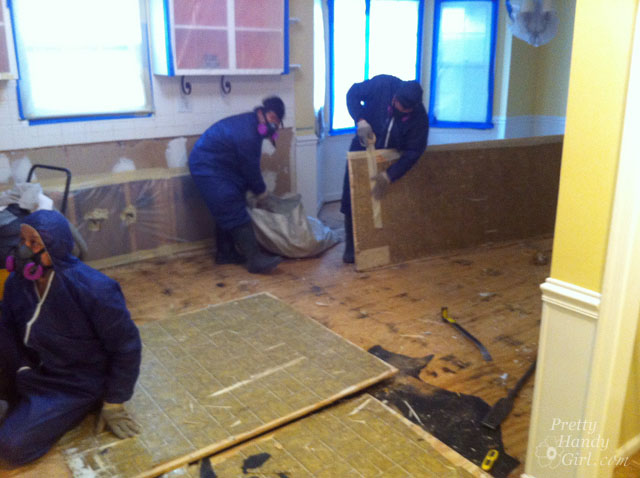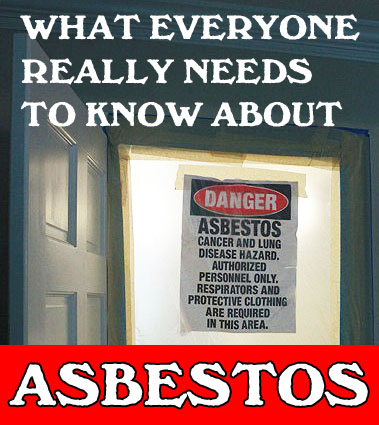This is the post that I’ve been putting off writing. Why? I was still dealing with the shock of it all. The gist of it is, if you think your home is safe from asbestos, you could be dead wrong! I thought our home was in the asbestos-free time frame, but I was sorely mistaken.
Background: What started as a small leak turned into a massive gut of our kitchen. The disaster restoration team came in and started assessing the damage. What happened next was a downward spiral of issues I pray never happens to you. The polybutylene pipe failure from two weeks ago turned into a full blown mold remediation (luckily it wasn’t black mold.) Shortly after removing the water soaked base cabinets in our kitchen, the project manager discovered old vinyl flooring under our newer vinyl flooring. He told me that they sent a sample to the lab for asbestos testing. I said, “Okay.” And dismissed it knowing that our house couldn’t possibly contain asbestos. The next morning I got a phone call, “The lab results came back and that old flooring tested positive for asbestos.”
What I learned over the next few days about asbestos both scared me and re-assured me. Now that our home is officially asbestos-free and we’ve finally moved back into the house, I’m emotionally ready to share with you what I learned. Read more


